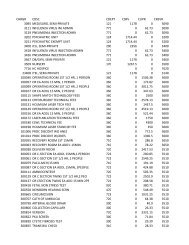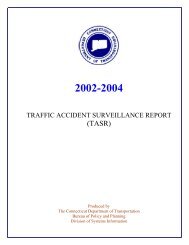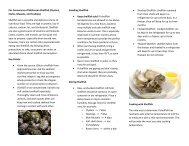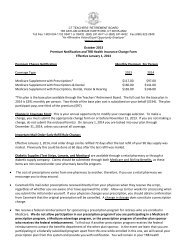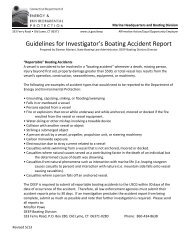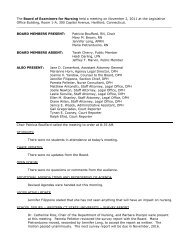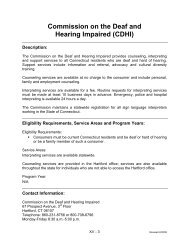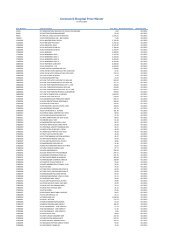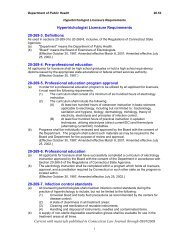Public Act 490 Guide - CT.gov
Public Act 490 Guide - CT.gov
Public Act 490 Guide - CT.gov
You also want an ePaper? Increase the reach of your titles
YUMPU automatically turns print PDFs into web optimized ePapers that Google loves.
ZONING AND PA <strong>490</strong><br />
Land classified under PA <strong>490</strong> is not necessarily affected<br />
by zoning, but rather by the use of the land. For example,<br />
if a tract of land is classified as farmland or forest land in a<br />
residential zone, and that zone is changed to commercial<br />
or industrial, the status of that tract should not change if<br />
the land continues to be farmed/forested. However in a<br />
new classification, the zoning may be relevant. In many<br />
towns, PA <strong>490</strong> open space land is directly tied to zoning<br />
regulations, permitting only acreage in excess of the<br />
minimum lot size for the zone to be classified as open<br />
space. Sometimes, depending on how localities have<br />
implemented the open space enabling statute, the town<br />
must revisit the ordinances if there is a zone change to<br />
properly account for the open space or other appropriate<br />
land use qualifications.<br />
Some towns have minimum acreage requirements for<br />
certain types of farming, and in these cases that requirement<br />
should be met before PA <strong>490</strong> status should be<br />
granted to a new farming operation to avoid conflict.<br />
Some towns prohibit farming or certain types of farming<br />
operations in particular zones. A new farmer should check<br />
with the zoning department to assure their operation is<br />
permitted before they apply for PA <strong>490</strong> farmland. Often<br />
existing farming operations are legally nonconforming to<br />
zoning because when the use began it was permitted,<br />
and these operations can receive PA <strong>490</strong> designation<br />
regardless of their zoning status.<br />
Zoned Building Lot Size and PA <strong>490</strong><br />
If there is a residence on the property, it is<br />
customary for the assessor to remove the acreage<br />
of the zoned lot size from the PA <strong>490</strong> farmland or<br />
forest land classification, even if some of the land<br />
within the zoned lot size is being farmed or is in forest<br />
land. However, if there is no residence on a parcel<br />
being classified as PA <strong>490</strong> farmland or PA <strong>490</strong> forest<br />
land, a building lot should not be removed unless<br />
requested by the landowner. It is important to<br />
consider CGS Sec. 12-107a, which is the intent of<br />
the legislation, when considering current use tax<br />
assessment.<br />
This was affirmed by the courts in Canterbury<br />
Farms, Et Al v. Waterford Board of Tax Review.<br />
PA<br />
<strong>490</strong><br />
SE<strong>CT</strong>ION 13: ZONING AND PA <strong>490</strong><br />
Connecticut Farm Bureau Association • http://www.cfba.org/pa<strong>490</strong>guide.htm • <strong>Public</strong> <strong>Act</strong> <strong>490</strong>: A Practical <strong>Guide</strong> and Overview<br />
29




